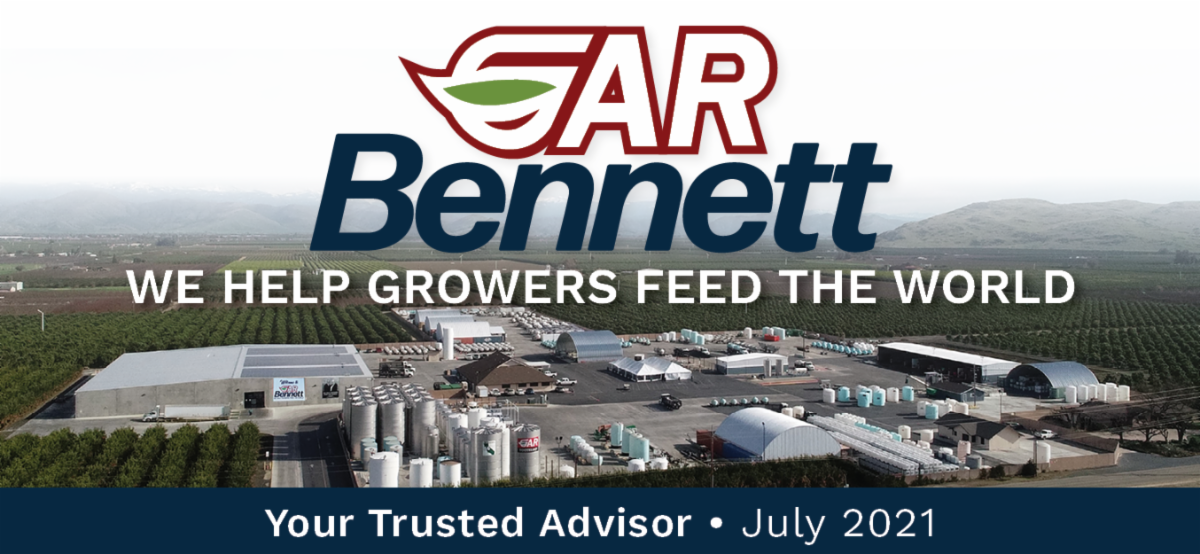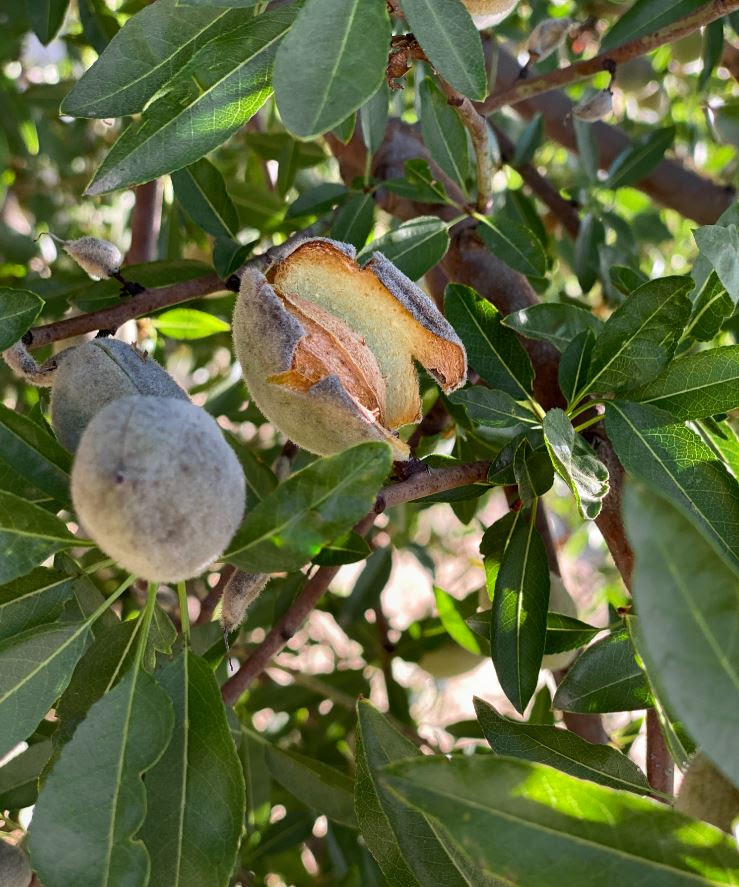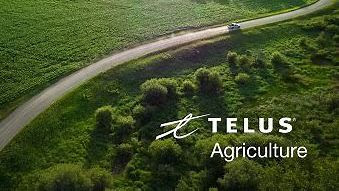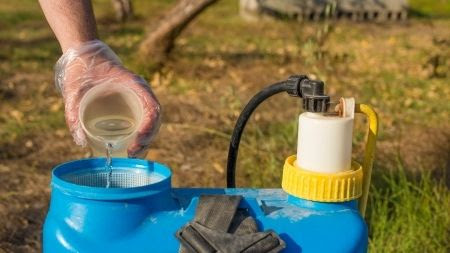
GET TO KNOW CHAD MATTOCK, GAR BENNETT PCA
CROP PROTECTION
Almonds: Growers are in the middle of navel orangeworm (NOW) sprays. If you have not already applied a miticide and did not put one in at hull split, keep a close eye on those blocks for mites. Try to keep down stress as much as possible before reducing irrigation. Ant bait should be out at this time. Orchard floors are being prepped for harvest, be sure to talk with your GAR Bennett PCA about post-harvest fertilizers in preparation for next year’s bloom.
Citrus: Growers are evaluating red scale populations and preparing for applications. Be aware of daytime temperatures when applying scale sprays. With the heat, oil can be difficult to apply. Watch the temperature during and just after spraying to avoid burn on the leaves and/or fruit. Also, monitor your potassium levels to help with sizing and sugar translocation. Consult your GAR Bennett PCA on timing and treatment options.
Grapes: Harvest is right around the corner for this crop, meaning growers are applying foliar potassium to increase Brix levels. As we are getting ready for harvest, keep an eye out for mites and mealybugs. These are pests you’ll want to be diligent about. Mites can decrease your Brix levels and populations have increased in some areas. Consult your GAR Bennett PCA on treatment options if this pest is an issue in your vineyard. Also, keep an eye out for stress due to the heat and check fields that were known to have mildew earlier this season to ensure your last fungicide application is holding up against bunch rot.
Stone Fruit: Worm sprays have been completed however, peak flights are coming up for peach twig borer (PTB) and oriental fruit moth (OFM). Consult your GAR Bennett PCA on products that may be used to treat both pests. Continue to monitor orchards for mites as we head into August. Growers are applying pre-harvest treatments in some fields for brown rot. Keep an eye out for silver thrips and contact your GAR Bennett PCA about pre-harvest treatment options. As we head into August, growers will be preparing their post-harvest fertilizer programs. Now is a good time to take leaf samples to assess field needs for these programs.
Cherries: As we fight the summer heat, be sure to keep an eye on mite development and talk with your GAR Bennett PCA about prompt treatment. Growers are applying sunburn protection and cleaning up weeds. Some are also applying fertilizers based on field demands.
Pistachios: Growers that had Alternaria issues in the past, treated for this disease the first week of July. Berms are being cleaned up with herbicide sprays. Growers are also finishing up their potassium applications this month so the pistachios have enough potassium to complete nut fill. NOW sprays will also begin in a few weeks. Phytophthora symptoms have shown up in some fields. If this disease is a problem in your trees, consult your GAR Bennett PCA on treatment options.
Walnuts: GAR Bennett PCA’s are monitoring husk fly traps and some orchards have already been treated. If you have shady spots or areas of moisture in your fields, consult your PCA on checking these areas for possible husk fly damage. The codling moth 2B flight should peak around July 20. For most orchards, trap counts have been low this season. PCA’s are also monitoring aphid and mite populations. Herbicides are being applied as needed.
Tomatoes: Harvest has started for this crop, with organic tomatoes being first. Some growers have applied worm and sun protection sprays. With the current water situation, some fields are being deficit irrigated.
Dehydrated Garlic and Onions: The season is finished for these crops and growers are now waiting for the processor to harvest. At this point, both crops are looking good with yields.
Cotton: Growers have finished another lygus spray and pix application. GAR Bennett PCA’s are seeing very little whitefly or aphid but are continuing to monitor for these pests.
Alfalfa Seed: Last irrigation went on last week. We are waiting for the seed to mature and cleaning up lygus, aphid and mites in the field.

MATING DISRUPTION
CROP NUTRITION
WATER SERVICES

COMPLIANCE
WORKER SAFETY
FOOD SAFETY





